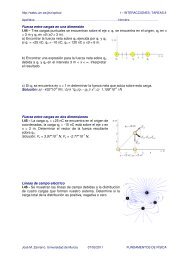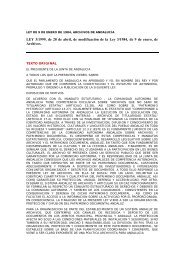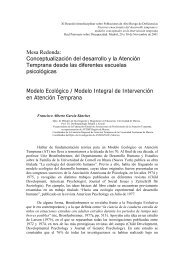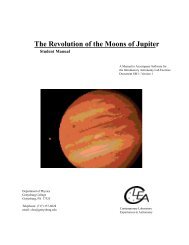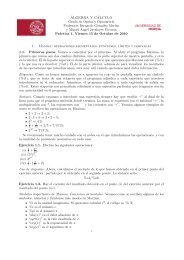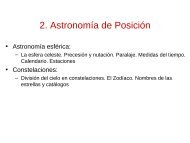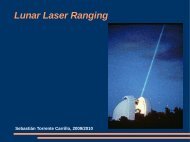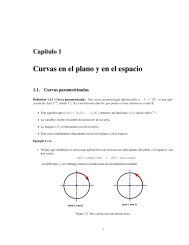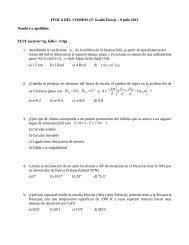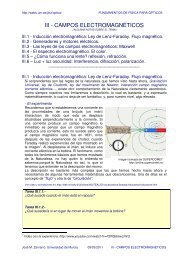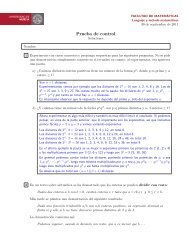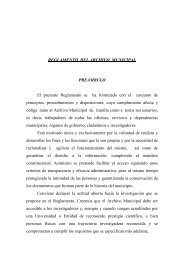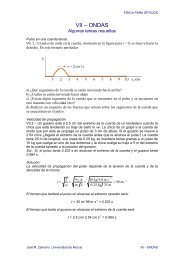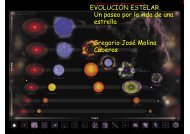AGRICOLA -- Guide to Subject Indexing
AGRICOLA -- Guide to Subject Indexing
AGRICOLA -- Guide to Subject Indexing
Create successful ePaper yourself
Turn your PDF publications into a flip-book with our unique Google optimized e-Paper software.
e misled in<strong>to</strong> indexing concepts that represent work notconducted as part of the research described in the documentat hand.3. Expressing Concepts Needed for Retrieval in the Two <strong>Indexing</strong> Languages Usedin <strong>AGRICOLA</strong>: the Classification Scheme and the Controlled Vocabulary.The classification scheme used for indexing <strong>AGRICOLA</strong> is the <strong>AGRICOLA</strong><strong>Subject</strong> Category Codes with Scope Notes (Modified AGRIS) and thecontrolled vocabulary is the CAB Thesaurus.These two indexing languages are independent of one another in thesense that each is a distinct system used <strong>to</strong> represent the subjectcontent of a document. The Category Codes assigned <strong>to</strong> a documentshould represent that document as completely as possible and withoutany necessity <strong>to</strong> refer <strong>to</strong> the descrip<strong>to</strong>rs assigned, and vice-versa.Naturally, this is not <strong>to</strong> say that there will not be relationshipsbetween the codes and the descrip<strong>to</strong>rs, but <strong>to</strong> point out that theyare used separately, not in combination with one another, <strong>to</strong>represent the document. Indeed, there may well be what appears atfirst blush <strong>to</strong> be redundancy in assignment of codes vis-a-visdescrip<strong>to</strong>rs and vice-versa.Descrip<strong>to</strong>rs representing the same concepts represented by theassigned Category Code(s) should always be assigned, though mos<strong>to</strong>ften the descrip<strong>to</strong>rs will be more specific than the codes <strong>to</strong> whichthey relate. To put this another way, a user should be able <strong>to</strong>comprehend why each Category Code was assigned by examining theassigned descrip<strong>to</strong>rs.The reverse, however, is not necessarily true; descrip<strong>to</strong>rs may beused <strong>to</strong> bring out aspects of the article which are not representedby the codes because these aspects are not treated in sufficientdepth or with sufficient emphasis <strong>to</strong> merit assignment of a code.In expressing concepts in the indexing languages, aim for as muchCONSISTENCY as possible in applying Category Codes and descrip<strong>to</strong>rs<strong>to</strong> represent concepts. Use the same code(s) and the samedescrip<strong>to</strong>r(s) <strong>to</strong> represent the same concept each time you index thatconcept. Our indexing will be valuable <strong>to</strong> <strong>AGRICOLA</strong> users onlyinsofar as it is CONSISTENT.3.1. <strong>AGRICOLA</strong> <strong>Subject</strong> Category Codes (MARC tag 072)NAL, as the U.S. input center, is a major contribu<strong>to</strong>r <strong>to</strong> AGRIS, adecentralized agricultural database maintained by FAO, the Food andAgriculture Organization of the United Nations. It is thereforeimportant that <strong>AGRICOLA</strong> and AGRIS Category Codes be compatible.AGRIS codes were found <strong>to</strong> be insufficiently specific for indexing<strong>AGRICOLA</strong> and the scheme was expanded, but in a manner which assuredeasy conversion of specific <strong>AGRICOLA</strong> codes in<strong>to</strong> broader AGRIS codes.In the <strong>AGRICOLA</strong> Category Code scheme, the field of agriculture isdivided in<strong>to</strong> 21 broad subject areas. Each of these areas is furthersubdivided, but even the subdivisions are very broad. Each of the5



